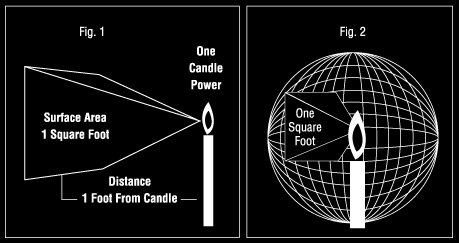 Loading... Please wait...
Loading... Please wait...- About Us
- LED Flood Lights
-
LED Lighting Projects
- Tennis Court LED Lighting Projects & Upgrades
- Netball Court LED Lighting - Case Studies & Projects
- Sporting Oval & Sports Field LED Lighting - Projects & Examples
- Lawn Bowls LED Lighting Projects & Upgrades
- General Area and Security LED Lighting - Projects & Applications
- Factory and Warehouse LED Lighting Projects & Applications
- Industrial LED Lighting Applications and Projects
- Help & Information
- Blog
- Contact Us
- Home
- Help & Information
- LED Buying Guide
- Understanding LED Lighting
- LED Light Levels - Brightness, Lumens and Light Measurements
LED Light Levels - Brightness, Lumens and Light Measurements
|
Lumens (lm) refers to the measurement of luminous flux which is the total amount of light (photons) produced by the LED light bulb or other type of light. One lumen is equivalent to one foot-candle falling on to one square foot of area. One foot-candle of light is the amount of light a candle produces one foot away from the candle.
Specific procedures for measuring total luminous flux are defined by the Illuminating Engineering Society of North America (IESNA) LM-79 test. An LM-79 test from an accredited National Association of Testing Authorities (NATA) lab in Australia costs approximately $1000 and is conducted using an Integrating Sphere Output report or a photometric (Goniophotometry) Test Report. Most LED light bulb manufacturers provide total luminous flux measurement reports using the Integrating Sphere method. The Goniophotometer method is considered more accurate but both methods are acceptable. For comparison purposes, as long as the same method is used for all bulbs then accurate comparisons can be made. At Lite On LED whilst we use manufacturer photometric test reports as a reference we re-test our LED light bulbs where possible using our own Integrating Sphere test instrument so that direct comparisons between different LED light bulb types can be made. We also provide a Lux comparison measurement between various globes tested under the same conditions. Therefore, across different manufacturers or retailers we are not necessarily comparing "apples with apples". Customers also need to be aware that light measurement refers to the total “downward” luminous flux rather that total luminous flux which can include upward dispersion of light which is generally wasted such as the case with traditional dichroic halogen downlights. A 50W dichroic halogen downlights will typically have a total luminous flux rating of between 700 to 800lm but the total downwards luminous flux (or lumens) is typically 550 to 600lm as the old halogen light emits a certain amount of light from behind the light which is lost. Notably, the NSW government Energy Saving Scheme requires 50W halogen downlight MR16/GU10 replacements to have a minim total downward luminous flux measurement of 500lm. Therefore the range of 500-550lm in and LED MR16 form downlight globe is considered near enough equivalent to a traditional 50W halogen. You can see this in our comparison photos under each one of our halogen replacement products. Beware of abnormally high lumen claims (>550lm) for 7W to 12W LED globes in the warm white or 3000K range from some manufacturers. They are either a down right lie or they are refering to the LED chip theoretical lumens and are ignoring the losses which occur from the lamp, particularly for warm white colours. There are few manufacturers that can produce greater than 550lm from an MR16 globe in the 7W to 10W range at 3000K Warm White. The Philips Master LED MR16 10W is arguably the bench mark and produces only 440lm at 3000K Warm White, although offers a good replacement for a 50W halogen. Their 4000K (Natural White) MR16 bulb is much better at 540lm, consistent with the expected greater efficiency at higher colour temperatures, and an acurate reflection of the potential lumen output of MR16 LED bulbs. Even the reasonable Osram Parathom, another MR16/GU10 10W bulb produces only 350lm at 3000K Warm White. So once again beware of over inflated claims. You can read more about this topic in our next section on understanding LED manufacturer specifications. References: Halogen lighting compliance requirements in Default Savings Factors (DSF) Guide. Energy Savings Scheme. IPART NSW Govt.
|


